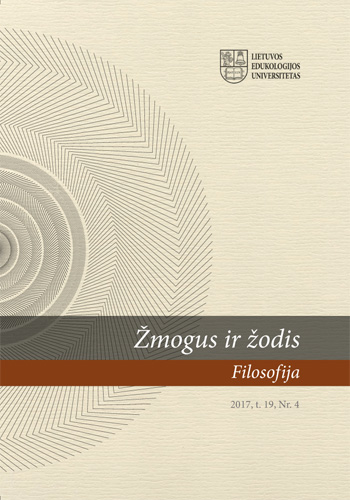The Problem of the “Nichts” (Rosenzweig) and the “Il y a” (Levinas) as a Correlate of the Human Identity
The Problem of the “Nichts” (Rosenzweig) and the “Il y a” (Levinas) as a Correlate of the Human Identity
Author(s): Luc AnckaertSubject(s): Ethics / Practical Philosophy, German Idealism, Existentialism, Phenomenology, Ontology
Published by: Vytauto Didžiojo Universitetas
Keywords: Rosenzweig; Star of Redemption; Levinas; Totality and Infinity; human identity; nothingness; there is; hypostasis; separation; Kant; Nietzsche; Meinecke; Schelling;
Summary/Abstract: The relation between the abyss of death and the human identity is constitutive for the thought of the dialogical thinkers Rosenzweig and Levinas. For Rosenzweig, the Nothing is the end point of Kantian thinking. Death, as the existential experience of this nothingness, was the reality of everyman during the violent decades at the turn of the century. Rosenzweig took this nothingness as the starting point for rethinking and safeguarding human identity. Human identity is a dam against nothingness. But human identity is also open to alterity. In his early texts, Levinas makes a similar move. The there is is the starting point of human identity. Levinas develops a dialectical phenomenology starting from death. Human identity is interpreted as hypostasis. But in Totalité et Infini, an important shift takes place. The starting point is now found in human identity as desire. The there is comes to the centre as the flip side of the elementale and human identity is interpreted as separation.
Journal: Žmogus ir žodis
- Issue Year: 19/2017
- Issue No: 4
- Page Range: 25-41
- Page Count: 17
- Language: English

